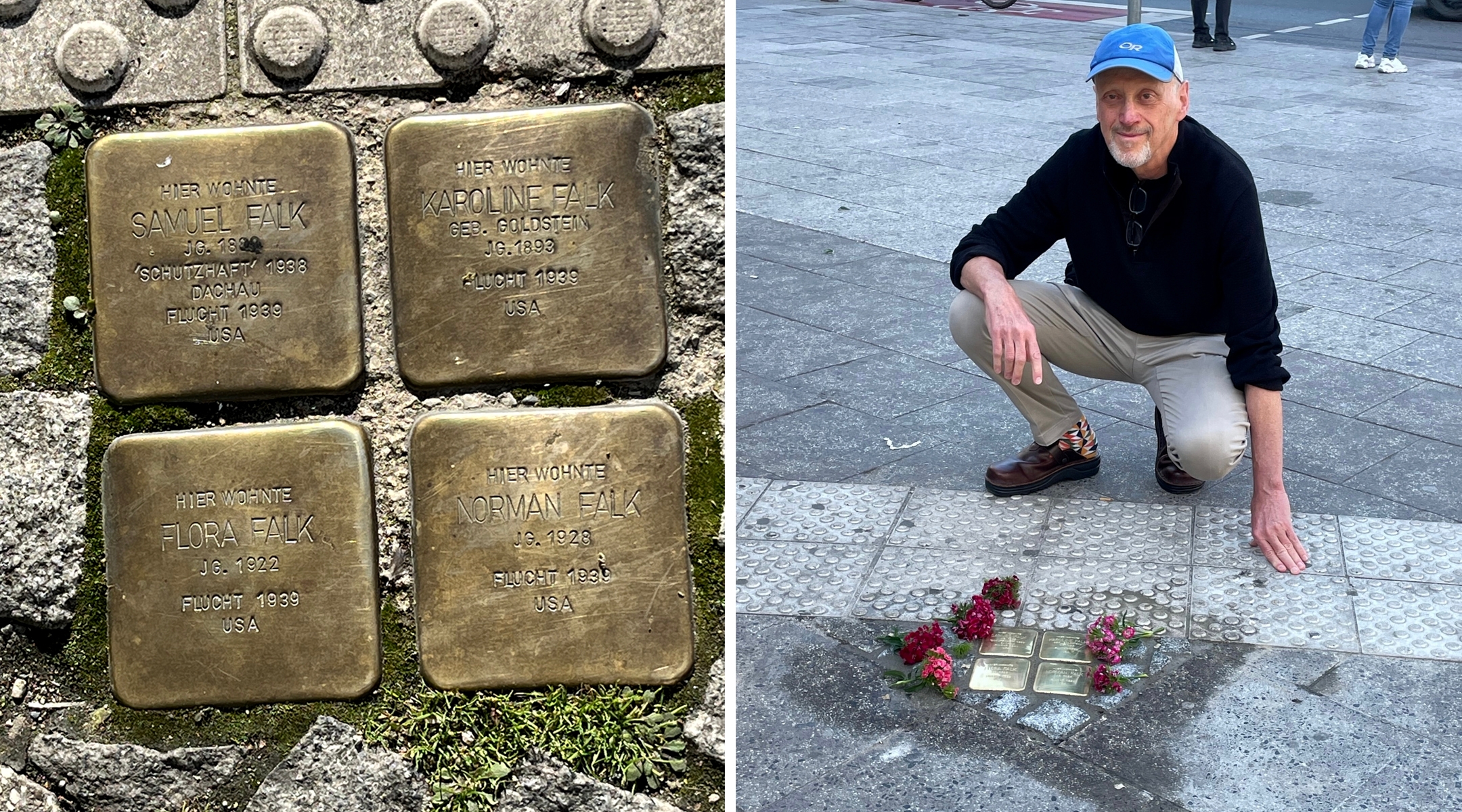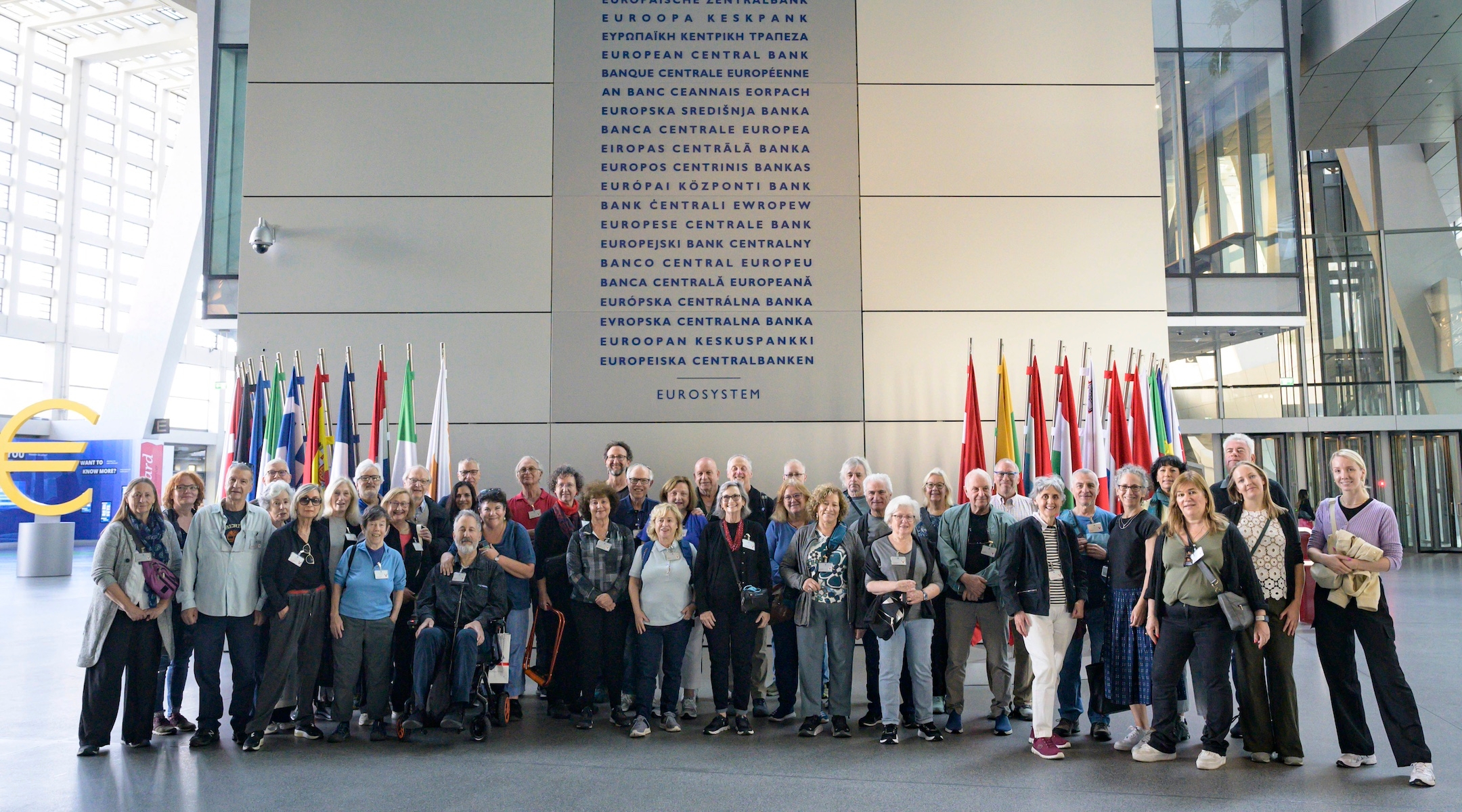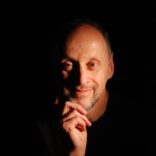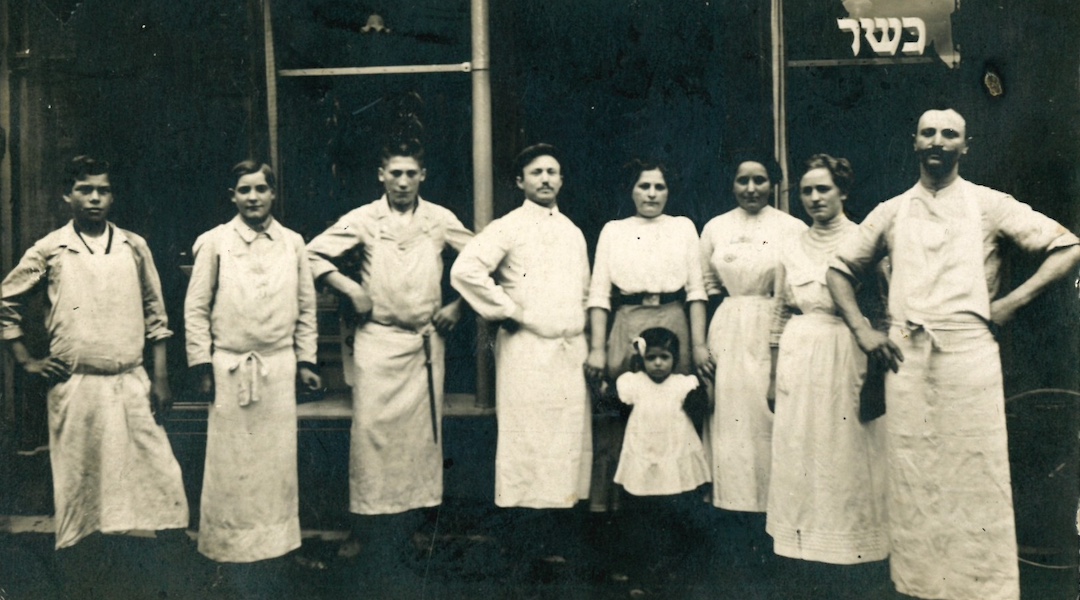My mother was a Holocaust survivor and my father left Germany in the mid-1930s, when Hitler was coming into power. I grew up in Washington Heights — a Manhattan neighborhood that became known as “Frankfurt on the Hudson” for its large German-Jewish population.
Most of my friends were children of survivors or children of refugees from Hitler’s Europe. Most of our parents did not talk very much about the Holocaust, but we grew up in the shadows of the trauma: the ghosts of family members who did not survive, the ongoing fears of persecution, the pressures to succeed, a contempt for all things German.
Even though I grew up speaking German, I was taught to identify the dialect spoken by non-Jews. When we heard it on our very occasional visits to the Yorktown section of Manhattan, we would discreetly cross the street. My parents also boycotted German products.
When I was first invited in 2023 to participate in the Frankfurt Visit Program — a week-long event for children of survivors whose parents lived in Frankfurt before and during the Holocaust — I wasn’t sure I wanted to attend. The program, organized and sponsored by the city, is designed to show what Jewish life was like in Frankfurt and what it’s like now, with a vibrant Jewish culture and several active synagogues.

The author traveled to Frankfurt in 2022 for the installation of four Stolpersteine — memorial brass “stumbling blocks” — in front of his mother’s original residence, one each for his grandfather, grandmother, mother and uncle. (Courtesy Stewart Florsheim)
Having grown up with antipathy to all things German, I did not want to support any programs that would even begin to relieve the Germans of their accountability.
But I had started on a journey — reading more and more about the progress of German accountability for the Holocaust, and speaking to individual Germans about their roles in remembrance and reconciliation. Perhaps it was time to come to terms with the past and confront the ghosts that inhabited my childhood.
My grandfather had a very successful kosher meat market in Frankfurt. On Kristallnacht, in 1938, everything changed. During that two-day Nazi pogrom, the butcher shop was vandalized and shut down. The Gestapo stormed my family’s apartment above the shop and deported my grandfather to Dachau. When he left, he told my grandmother not to worry, and not to go to the Gestapo to try to get him released. After all, he said, he defended Germany in World War I. Whatever is going on now, he insisted, will blow over.
My grandmother had sisters living in New York City and, as a result, was able to get a visa for the family to move to America. Contrary to my grandfather’s wishes, she apparently went to the Gestapo every day to try to get him released.
My mother used to tell this story: “Six weeks after my father was taken, I woke up at 2 a.m. because I had a premonition that he was coming home. I ran down to the train station and there he was, on his way home, crying. He cried for weeks. He was never the same.”
The reunited family left everything behind and set sail for New York City in March 1939 to rebuild their lives.
I was surprised when my parents decided to participate in a program called “Wiedergutmachung” (literally, “to make good again”) over 20 years ago, when the local German government invited survivors and refugees back to their hometowns to express their remorse. I was against the visit, but my parents prevailed. My father often spoke about his idyllic village and he had a sudden interest in seeing it again. When he went back, he was treated like a VIP. It turned out to be a beautiful closure to his life, because he passed away a few months after he returned.
I started to have a change of heart when a few of my friends told me about their positive experiences with the Stolpersteine program: Starting in 1992, small brass plaques, or “stumbling blocks,” were placed in front of the places where the Nazis’ victims had lived, worked and studied. My friends were pleased to have the opportunity to memorialize their families and attend the installations. I decided to participate in the program with that simple aspiration in mind. I traveled to Frankfurt in 2022 for the installation of four Stolpersteine in front of my mom’s original residence–one each for my grandfather, grandmother, mother and uncle.
The next step in my journey was a bit more complicated: becoming a German citizen.
I never thought I would want to live in Germany, but, motivated in part by the current political situation in the U.S., I was attracted by the idea of having access to the EU. Now, after a few recent trips to the country, I began to fantasize about what it might be like to live in international centers like Berlin or Frankfurt. I applied in March 2022 and received my naturalization certificate in October of the same year.
Having become a German citizen, and learning about how Germans were teaching about the Holocaust, supporting refugees and fighting ring-wing ideology, I couldn’t see a reason not to participate in the Frankfurt Visit Program this past September.

Participants in the Frankfurt Visit Program, including the author, gather at the European Central Bank in Frankfurt, Germany, Sept. 20, 2024. The bank is built on a site where Jews were rounded up during the Holocaust. (Salome Roessler/lensandlight)
During the week of the program, we met with local students to tell them about our experiences as the children of survivors, a program organized by Project Jewish Life. I asked them when and what they learned about the Holocaust, and if they felt any remorse. Most of them agreed they were too far removed, but they wanted to learn about it, partly to make sure it doesn’t happen again. By way of comparison, one of the teachers, a woman in her 40s, said her grandparents never spoke about the Holocaust, and she was too ashamed to acknowledge that she was German when she traveled around Europe in her teens.
The conversations moved to current times; for example, the students wanted to know about antisemitism in the U.S. given the crisis in the Middle East. I told them how impressed I was that Germany has been accepting accountability for the Holocaust, as witnessed by so many actions, including the acceptance of refugees fleeing persecution, climate change and other disasters.
Since I write poetry, I also met with a group of students at the University of Frankfurt who are studying poetry. They wanted me to read poems about my experiences growing up as a child of a survivor. The class included native Germans as well as refugees, and they asked me questions about my writing process, and whether or not it helps me come to terms with the past.
I told them it does, as represented by the last few stanzas of one of the poems I read called “Mother’s Favorite Drawing.” The poem is based on a drawing by Käthe Kollwitz called “Mother and Child:”
Mother wants to hang it over her bed in a spot
framed now by the shadow of the fire escape,
the steps and ladder imposed over mother and child
bracing them forever in flight.
I told them my writing helps me grapple with the ghosts of the Holocaust, but I will always be aware of the horrors of persecution and genocide, and one step away from understanding that, at any point in time, I might need to flee.
My mother used to say the Holocaust affected me more than it affected her — partly because I never stopped asking questions and reading about it. I felt like I was living in two worlds: a world inhabited by the ghosts, and our comfortable middle-class American life. I was always trying to reconcile the two worlds, which later extended into an activism against contemporary genocide.
On my journey from Washington Heights to Frankfurt, I discovered that reconciliation is well under way.
The New York Jewish Week brings you the stories behind the headlines, keeping you connected to Jewish life in New York. Help sustain the reporting you trust by donating today.






